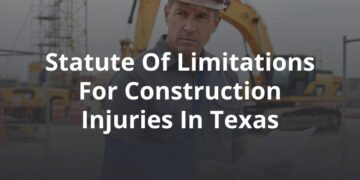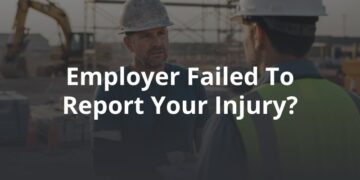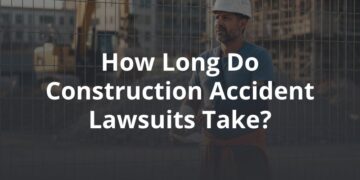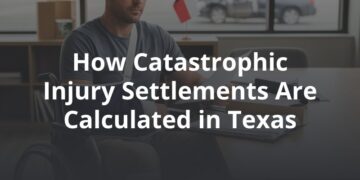Key Takeaways:
- 5,092 crashes involving autonomous vehicles were reported in Texas over a two-year span.
- 2,235 people were injured, and 42 lost their lives in these crashes.
- 28% of crashed autonomous vehicles were in Harris County.
- 901 autonomous vehicles were involved in crashes in Pasadena, more than any other city in Texas.
- The Tesla Model 3 was the most frequently crashed autonomous vehicle, with 266 incidents, followed by the Ford F-150 (266), Toyota Corolla (188), and Tesla Model Y (188).
Autonomous vehicles, or vehicles equipped with driver assistance systems, are becoming increasingly common on Texas roads. Both everyday drivers and major companies are exploring how this technology can improve safety, efficiency, and the overall driving experience. For many organizations, Texas provides an ideal testing ground for higher levels of automation, thanks to its supportive regulations, diverse road networks, dense traffic patterns, and proximity to major urban centers, among other advantages.
These vehicles operate across a spectrum of automation levels, from Level 1, which includes basic driver assistance, up to Level 5, full automation. Today, several popular models come equipped with features that fall within the lower levels of automation. In fact, as of 2023, more than half of new vehicles sold in the U.S. include some form of Advanced Driver Assistance Systems (ADAS). While these features are designed to enhance safety and convenience, their real-world impact on crashes remains an area that requires further study given that adoption is still in a transitional stage.
This analysis examines crash data involving vehicles with driver assistance systems between March 2023 and December 2024. Incidents are categorized by automation level, and the Texas cities and counties with the highest crash counts are identified, along with the makes and models most frequently involved. Reporting on these systems began in March 2023 through the standard CR-3 crash report. Because law enforcement records this information at the scene, misclassifications or inconsistencies in how automation levels are recorded are possible. Moreover, these statistics should not be interpreted to suggest that vehicles with driver assistance systems are inherently more likely to crash or cause harm. The data does not explicitly determine whether the driver or the system was at fault, but they offer insight into the evolving relationship between humans and automation on the road.
By examining these trends, this study aims to provide a clearer understanding of the current state of autonomous vehicle technology in Texas and its implications for drivers, road safety, and transportation.
Defining Vehicle Automation Levels
Before getting into the findings, it’s important to understand the different levels of automation in vehicles. These five levels can be divided into two main categories: ADAS (Advanced Driver Assistance Systems) and ADS (Automated Driving Systems).

Levels 1 and 2 are known as Advanced Driver Assistance Systems (ADAS), which support the driver with features like adaptive cruise control and lane-keeping but still require the driver to maintain full control of the vehicle. On the other hand, Levels 3 through 5 are referred to as Automated Driving Systems (ADS), as they shift more of the driving responsibility to the vehicle. Level 3 systems can manage driving tasks under specific conditions but require the driver to step in when prompted. Level 4 systems operate independently within defined areas, while Level 5 achieves full automation, allowing the vehicle to drive in any environment without human involvement.
It’s important to note that the adoption of these automation levels has been gradual. Features found in Level 1 systems, such as cruise control and lane-keeping assistance, started appearing in a wider range of models in the 2010s. Tesla’s Autopilot, introduced in 2015, was one of the earliest and most prominent examples of Level 2 automation. By 2017 and 2018, Level 2 features became more common, with mainstream automakers offering them in more affordable models, not just high-end vehicles. By 2020, many new vehicles, especially those in mid-range price brackets, came with Level 2 features as standard or optional upgrades.
Tracking Crashes Among Autonomous Vehicle Owners in Texas
Now that we’ve established the different levels of automation, let’s look at the crash data to see how vehicles equipped with these systems have fared on Texas roads and the harm they’ve caused for some.

Since March 2023, there have been 5,092 unique crashes involving vehicles operating at various levels of automation in Texas. These crashes resulted in injuries to 2,235 drivers and passengers and claimed the lives of 42 people.
In total, 5,815 autonomous vehicles were involved in these crashes. Breaking this down by automation level, 76.75% (4,463 vehicles) were operating at Level 1, or driver assistance. Meanwhile, 20.72% (1,205 vehicles) were operating at Level 2, or partial automation. The remaining 2.49% (145 vehicles) were classified as Levels 3 through 5, ranging from conditional automation to full automation.
Vehicles operating at Level 4 or Level 5 are not available for personal ownership by the general public. Some companies operate highly automated vehicles in pilot transportation programs in certain cities; however, fully automated vehicles remain largely in the testing phase. Accordingly, crash counts attributed to these levels in the dataset should be interpreted with caution, as they may reflect reporting errors or misclassifications.
Where in Texas are These Crashes Happening Most?
Next, we explored whether certain areas of Texas experienced a higher concentration of these crashes than others.
Harris County recorded the highest proportion of crashed autonomous vehicles, accounting for 27.63% of all such incidents in Texas, with 1,614 vehicles involved. Pasadena, found within Harris County, emerged as the city with the highest count of crashed autonomous vehicles, reporting 901 vehicles. Houston, ranked third, along with parts of Pearland and Friendswood also falls within Harris County.
Hidalgo County accounted for 12.29% of crashed autonomous vehicles, ranking second. This includes the city of Weslaco, which reported 590 crashed autonomous vehicles, placing it second on the list for these incidents.
Other major cities in Texas, including San Antonio, Dallas, Fort Worth and Austin, also contribute significantly to the total number of crashed autonomous vehicles. Dallas County, for instance, ranks third overall, accounting for 7.33% of these incidents.
Urban areas tend to have higher population densities, which naturally increases the number of vehicles on the road, including autonomous vehicles. Additionally, these cities often see higher rates of autonomous vehicle adoption, driven by socioeconomic factors. Residents in these urban areas are more likely to have the financial means and interest in purchasing advanced vehicles that include autonomous features. Furthermore, larger cities are often major industry and employment hubs, resulting in long commutes and a higher frequency of vehicle use. This combination of factors contributes to the greater presence of autonomous vehicles in urban settings, and as a result, their increased likelihood of being involved in crashes.
The map below shows the specific locations where crashes involving autonomous vehicles have occurred across the state. Zoom in for a detailed view of areas of interest.
Which Car Makes Are Associated with Autonomous Vehicle Crashes?
We also examined the vehicle makes most often involved in these incidents throughout Texas. Below are the top 15 models with autonomous features that recorded the highest number of crashes.
The Tesla Model 3 leads with 266 crashed vehicles, followed by the Ford F-150 with 188. Tied for third are the Toyota Corolla and Tesla Model Y, both with 176 crashed vehicles. Other common models include the Toyota Camry, RAV4 and Highlander, which also appear among the top entries.
Many of these models are not only widely popular but also common in the autonomous vehicle market. Tesla’s Model 3 and Model Y, for example, are widely recognized in the autonomous vehicle sector for their advanced self-driving technology. The Ford F-150, a top seller in the broader market, has also been integrated with autonomous features in certain versions. Similarly, the Toyota Corolla, Camry and RAV4 are frequently equipped with partial automation..
We’ve also broken down the top vehicle makes according to their level of automation to provide a more nuanced understanding. Below is a table for Levels 1 through 3, as they are in active use among the public.
A Look Into the Future of Autonomous Vehicles in Texas
Texas provides a practical environment for testing and deploying autonomous vehicle technology. Across the state, pilot programs have been implemented in industries such as freight, delivery, and public transit.
In 2024, Waymo began testing its robotaxi service in Austin, with plans for a full commercial launch via Uber in 2025. Meanwhile, Cruise, a subsidiary of General Motors, conducted a testing phase in Houston in 2023, though its operations were halted in 2024 due to regulatory and technical challenges. Despite Cruise’s departure, autonomous vehicle services remain active in Houston. Nuro, a company specializing in driverless delivery, initially partnered with Kroger in 2019 for grocery deliveries and has since expanded to Uber Eats, Domino’s, and CVS Pharmacy, offering food, essentials, and prescription medication deliveries. In November 2024, the company announced plans to expand its service area in Houston by 70% reinforcing Texas’ role in advancing autonomous delivery solutions.
Autonomous trucking is another area where Texas is positioned to play a leading role. As a major freight transportation hub, the state’s key corridors, including I-10, I-35, and I-45, make it an attractive location for testing and deploying self-driving trucks. Companies like Kodiak Robotics, Plus, Aurora Innovation Inc., and Torc Robotics are actively operating in Texas. Autonomous trucks could help alleviate the growing driver shortage, improve fuel efficiency, and reduce long-haul driver fatigue. Additionally, autonomous last-mile delivery services could thrive in urban and suburban areas, where demand for quick and reliable deliveries continues to rise.
Public transportation is also seeing early adoption of autonomous technology. In 2021, Arlington launched the RAPID program, offering self-driving vehicle rides in downtown Arlington and on the University of Texas at Arlington campus. With funding secured through mid-2025, the program is actively collecting data on residents’ perceptions of autonomous transit to help shape its future. Houston has also ventured into autonomous public transportation, launching a pilot program in 2023 for Futurelink, a zero-emission, self-driving shuttle service. As these programs develop, they could pave the way for broader adoption of autonomous transit solutions across Texas.
As autonomous vehicles become more common, it is important to evaluate their real-world impact on safety. Crash data indicate that while these vehicles have the potential to reduce human error, they are not immune to collisions. This is especially true in interactions with human-driven vehicles. The future of autonomous vehicles in Texas will depend not only on technological advancements and regulatory support but also on continued data-driven evaluations of their real-world performance.
Gaps in Autonomous Vehicle Crash Reporting
Autonomous vehicle (AV) crash reporting remains inconsistent across jurisdictions, raising concerns about transparency and safety oversight. At the national level, the NHTSA requires manufacturers to report serious AV crashes within one business day and collect disengagement data when human drivers take control.
While Texas has updated its crash reports to note AV involvement, critical details—such as system failures or takeover requests—are missing, making it difficult to assess fault and safety risks. In contrast, California enforces stricter reporting, requiring manufacturers to submit detailed collision and disengagement reports. Without similar measures, Texas risks gaps in AV crash analysis, potentially hindering safety improvements. More standardized data collection and reporting are necessary to track patterns and refine regulations for safer AV integration.
Read more about the gaps in autonomous vehicle crash reporting and how reporting requirements impact our understanding of AV performance in real-world conditions.
Methodology
We analyzed Texas Department of Transportation data for crashes involving autonomous vehicles. The data is from the time period 3/31/2023 to 12/31/2024. Vehicles with an unknown autonomous level are not included in the analysis.
Fair Use Statement
We hope this article was informative. If you know someone who might benefit from this information, feel free to share our findings. We kindly request that you include a link back to this page to properly credit the research and insights shared here.





